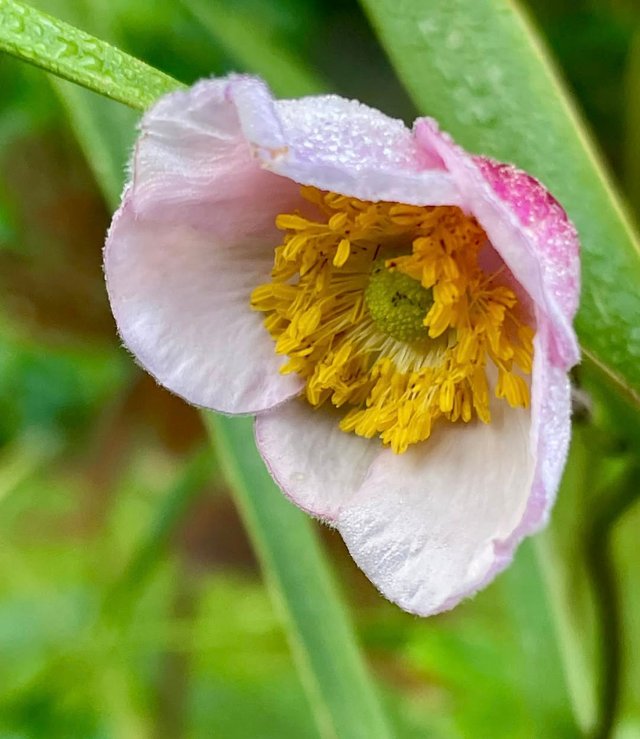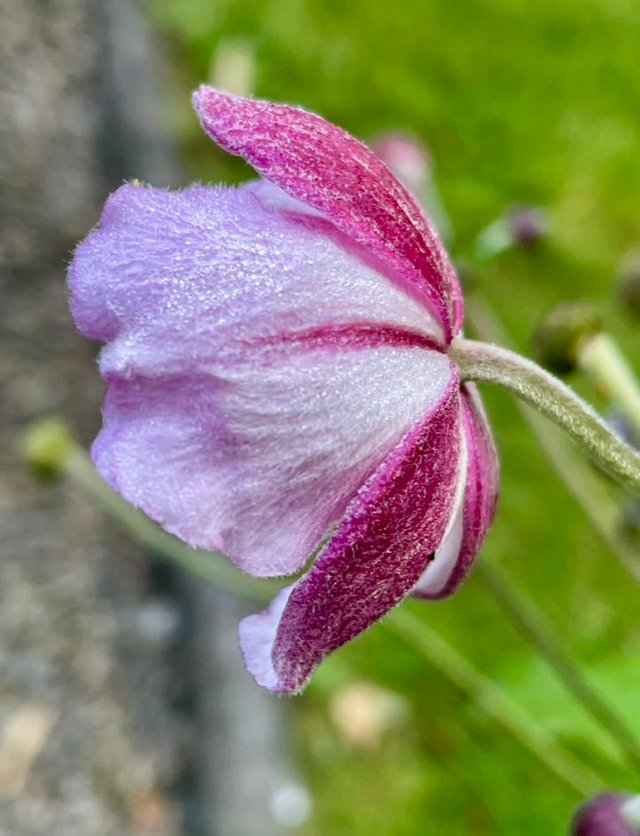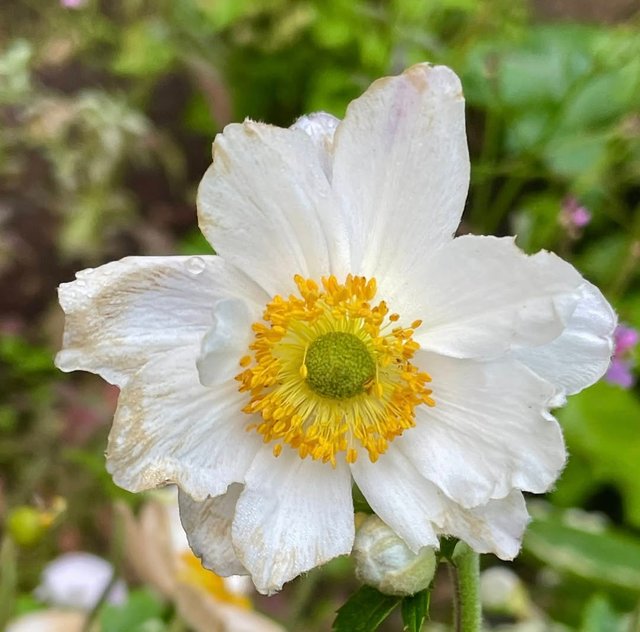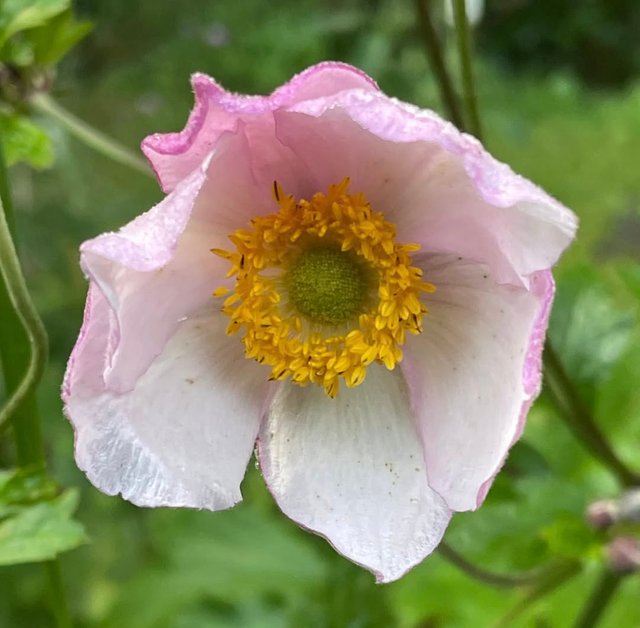Japanese thimbleweed
Japanese thimbleweed is a graceful perennial flowering plant that belongs to the buttercup family Ranunculaceae and is admired for its delicate charm, late-season blooms, and resilience in gardens. Native to China but long cultivated and naturalized in Japan, this plant has been associated with Japanese horticulture and thus carries the name “Japanese thimbleweed” or sometimes “Japanese anemone.” It is highly valued as an ornamental plant, adding elegance and color to gardens when many other flowers have already faded. The plant typically grows between 60 to 120 centimeters tall, forming dense clumps with erect, wiry stems that bear solitary or clustered blossoms. Its leaves are dark green, deeply lobed, and toothed, creating an attractive mound of foliage at the base.
The flowers, which bloom from late summer into autumn, are its most captivating feature. They are usually white, pink, or lavender with a central ring of golden-yellow stamens surrounding a prominent greenish center, giving them a refined and eye-catching appearance. The petals, actually sepals, are simple and delicate, sometimes tinged with soft gradients of color that glow under the autumn light. Japanese thimbleweed thrives in partially shaded to full sun locations with well-drained, fertile soil that retains some moisture. It prefers a cool and temperate climate and can tolerate both shade and sunlight, making it versatile for borders, woodland gardens, and cottage-style plantings.
Once established, it spreads by rhizomes, gradually forming colonies that can naturalize in suitable conditions. Gardeners appreciate it for its ability to bring life to shaded areas and extend the flowering season well into fall. It is also relatively resistant to pests and diseases, though it may require some protection from strong winds as its tall stems can be fragile. Beyond its ornamental appeal, Japanese thimbleweed holds cultural and symbolic value. In Japan and other East Asian traditions, anemones are often linked with themes of protection, anticipation, and renewal. Its late-season blooms are seen as symbols of endurance and quiet beauty, thriving when most other flowers are fading. In Western cultures, the flower has also been adopted into gardens and is admired for its romantic and delicate charm.




